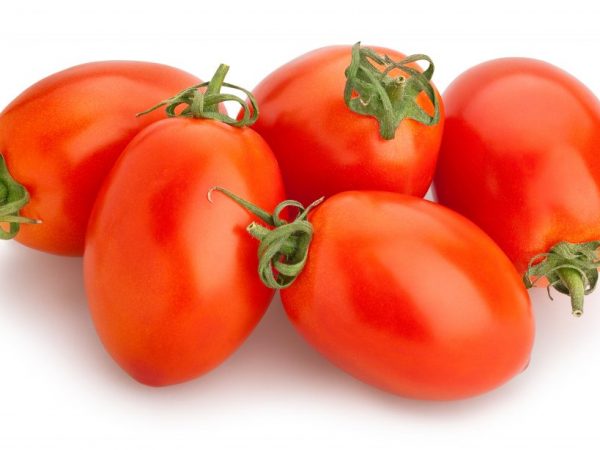Description of tomato Marusya
Not a single summer season goes by without planting tomatoes. One of the most common varieties is the Maroussia tomato. It has excellent appearance and taste characteristics.

Description of tomato Marusya
Characteristics of the variety
Tomato Marusya was bred by Russian breeders relatively recently. The year of hatching is 2007.
Tomato Marusya was created specifically for cultivation in all regions of the country. In cold climates, planting is carried out in greenhouses or under film, and in regions with a temperate climate, it is possible to grow in open areas.
Description of the plant
The tomato variety Marusya ripens in an average amount of time. It is believed that the growing season is about 100 days. The bush is of a determinant type, it grows up to 100 cm. Tomato Maroussia tends to form fruits in the form of a grape bunch.
According to the description, the leaves of a bush are medium in size, rich in dark green color. It is not necessary to form a bush into 1 stem: he himself does an excellent job with this task.
The tomato variety is also highly resistant to various diseases.
Description of the fetus
According to the description, the fruits are small. On average, the weight of one ripe fruit is about 150-180 g. The shape of the fruit is oval, a bit like a plum. The color of the fruit is deep red, without streaks or flaws.
The pulp is juicy, not watery, even though the amount of dry matter in the pulp is minimal. The taste is sweet, with a slight sourness. The yield is high: about 7 kg of tomatoes are harvested from one bush. Tomatoes of the Marusya variety are universal types.
Dignity
The main advantages of Marusya tomatoes include the following characteristics:
- high resistance to diseases;
- resistance to temperature extremes;
- heat tolerance;
- high yield rates;
- possibility of long-term transportation and storage.
Tomatoes of the Marusya variety have no particular drawbacks.
Growing rules

Seedlings are planted after 2 months
First of all, seeds are planted to obtain seedlings. It is believed that the ideal time to plant seeds is 2 months before planting the seedlings in open soil. All seeds should be placed in separate containers, the distance between which is about 40 cm. Germination occurs at a temperature of 16 ° C.
Planting in open ground is carried out only after the evening frosts have ended. Before planting seedlings, the soil is fed with minerals with a high content of phosphorus and potassium compounds. Planting is carried out according to the principle that a distance of 50 cm is maintained between the holes and rows.
Care
Tomatoes require minimal maintenance. It consists in weeding the beds regularly, loosening the soil, removing weeds and watering. Watering is carried out in the evening and exclusively with water at room temperature: this does not allow the roots to rot when exposed to high temperatures.
Top dressing is carried out infrequently: 2 times a month.For these purposes, it is recommended to use minerals with phosphorus and potassium. Organic substances can be discarded.
Diseases and pests
This species resists disease well.
Sometimes tomatoes crack due to improper watering.
A manganese solution helps from aphids, with which each damaged bush is treated. Sometimes in the fight against the bear they use folk methods: lime. If we consider chemical methods of struggle, then the drug Regent comes to the rescue.
To get rid of the greenhouse whitefly, it is recommended to use Confidor. To prevent slugs from affecting the plant, it is treated with tobacco dust mixed with ash. Karbofos helps with the presence of ticks.
Conclusion
Growing a crop is a real pleasure for every gardener. If you carry out all the care measures correctly, you can achieve incredible results in the field of agronomy. The main thing is to follow all the instructions and regularly conduct a visual inspection of the bush for the presence of parasites and diseases.


